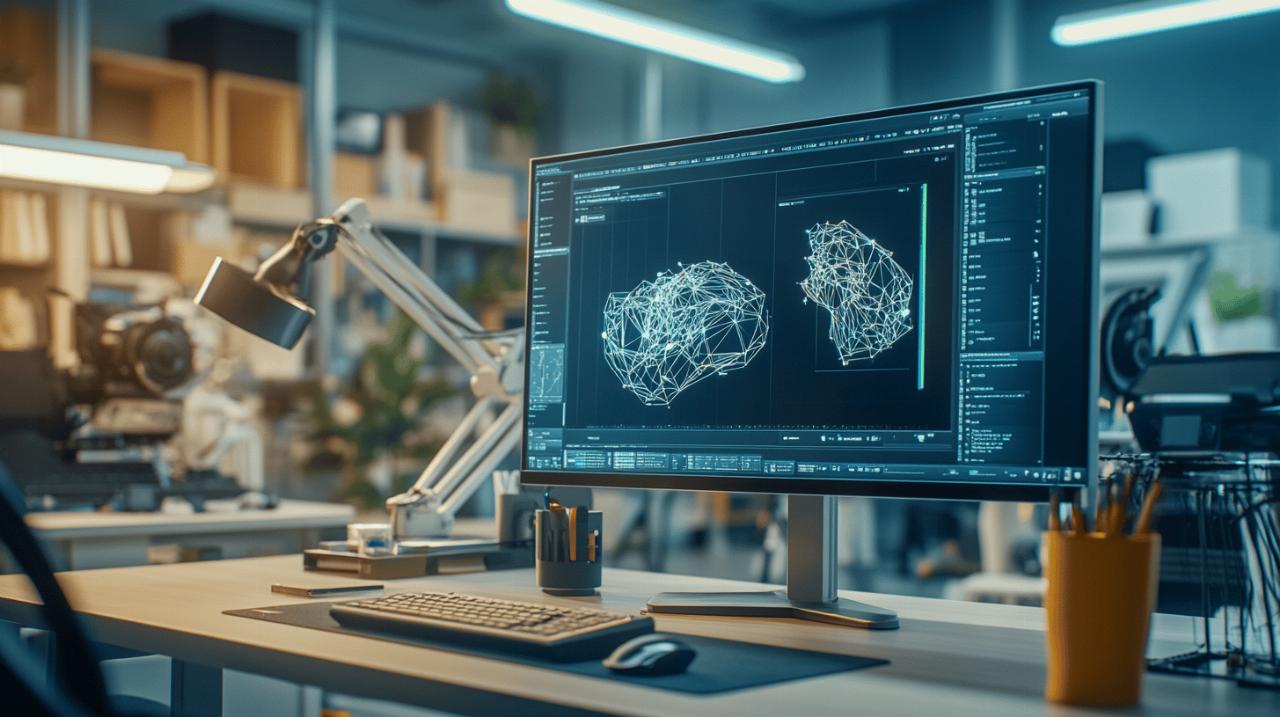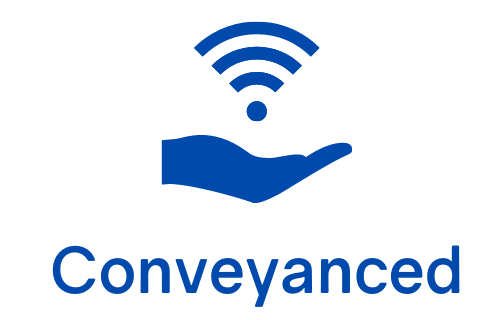The democratisation of three-dimensional design has transformed the creative landscape over the past few years, offering both hobbyists and professionals unprecedented access to sophisticated tools without the financial burden typically associated with premium software. Whether you're an aspiring animator, an architect exploring spatial concepts, or a game developer working on your first indie title, the availability of high-quality free programmes has opened doors that were once firmly shut to those working on limited budgets. This comprehensive overview examines six standout options that have distinguished themselves in the crowded marketplace of complimentary design tools, each bringing unique strengths to different creative disciplines and project requirements.
Understanding the Landscape of Free 3D Software
Why Free 3D Software Has Become a Game-Changer for Creators
The evolution of free three-dimensional design software represents one of the most significant shifts in creative technology accessibility in recent decades. Historically, professional-grade modelling packages demanded substantial financial investment, often running into thousands of pounds annually, which effectively created barriers for students, independent creators, and small studios. Today's landscape tells a remarkably different story, with open-source initiatives and freemium models providing genuine alternatives that rival their commercial counterparts in capability and output quality. The rise of community-driven development, particularly evident in projects that benefit from contributions by thousands of developers worldwide, has accelerated feature development and ensured these programmes remain competitive with proprietary solutions. Educational institutions have embraced these budget-friendly options enthusiastically, recognising that students can now learn industry-relevant skills without institutional subscriptions to expensive software suites. Furthermore, the web-based revolution has eliminated installation complexities and hardware limitations, allowing creators to work from virtually any device with an internet connection. This accessibility extends beyond mere cost savings, fostering a more diverse creative community where talent and determination matter more than access to capital, fundamentally reshaping who can participate in fields ranging from animation to architectural visualisation.
Key Features to Look for When Choosing Your 3D Package
Selecting the appropriate three-dimensional design software requires careful consideration of several critical factors that extend beyond the initial appeal of a zero-pound price tag. Interface intuitiveness stands paramount for newcomers, as programmes with steep learning curves can frustrate even the most determined beginners, potentially discouraging continued exploration of the medium. The availability of comprehensive documentation and tutorial resources significantly impacts the learning experience, with robust community support often proving invaluable when troubleshooting technical challenges or discovering advanced techniques. Export capabilities deserve particular attention, especially for creators working towards specific outputs such as three-dimensional printing, game engine integration, or architectural rendering, as format compatibility can determine whether your workflow remains smooth or becomes frustratingly disjointed. Performance optimisation matters considerably, particularly for those working on modest hardware configurations, as poorly optimised software can render even powerful machines sluggish when handling complex scenes. Feature completeness varies dramatically across free offerings, with some providing comprehensive toolsets rivalling premium software whilst others focus deliberately on specialised niches, making it essential to match programme capabilities with your intended applications. Regular updates and active development signal ongoing commitment from creators or companies, ensuring bugs receive attention and new features arrive to keep pace with evolving industry standards. Community size and engagement often correlate directly with resource availability, as larger user bases generate more tutorials, plugins, and shared knowledge that collectively accelerate skill development and problem-solving.
Comprehensive Reviews of the Six Leading Free 3D Applications
Blender, sketchup free, and freecad: the professional-grade trio
Blender stands as perhaps the most remarkable success story in open-source software development, having evolved from a modest internal tool into a comprehensive creative suite that professionals across industries now depend upon daily. This entirely free and open-source package provides an astonishing breadth of functionality encompassing modelling, sculpting, animation, rendering, compositing, and even video editing within a unified environment. Its reputation for possessing a steep learning curve remains somewhat deserved, as the interface presents newcomers with an initially overwhelming array of options and keyboard shortcuts that demand patience to master. However, the investment in climbing this learning curve yields substantial dividends, particularly for those interested in animation, game development, and three-dimensional printing applications. The programme's rendering engines produce results that stand comparison with commercial alternatives costing thousands annually, whilst its active development community ensures regular feature updates and stability improvements. SketchUp Free represents a strategic web-based offering targeting architects, engineers, designers, and builders who require intuitive spatial modelling without unnecessary complexity. This browser-accessible version provides surprisingly capable functionality despite its limited feature set compared to paid tiers, with SketchUp Go available at approximately ninety-five pounds annually offering enhanced capabilities, and SketchUp Pro delivering the full desktop experience for roughly two hundred seventy-seven pounds yearly. The programme's signature push-pull interface remains delightfully intuitive, allowing users to rapidly prototype architectural concepts or product designs with minimal training, whilst its extensive library of pre-built models accelerates project development considerably. FreeCAD carves out its niche serving engineering and product design communities requiring parametric modelling capabilities that facilitate easy adjustments to dimensional parameters throughout the design process. This technical focus makes the software particularly valuable for mechanical engineering applications where precision and modifiability take precedence over artistic expression, though its interface may feel somewhat utilitarian compared to more visually polished alternatives.
Tinkercad, Sculptris, and Clara.io: Accessible Solutions for Beginners and Artists
Tinkercad exemplifies accessibility-focused design philosophy, presenting absolute beginners with a browser-based interface that strips away intimidating complexity in favour of immediate creative satisfaction. This Autodesk-owned platform particularly excels as an educational tool and entry point for those curious about three-dimensional printing, offering geometric building blocks that users combine and modify with refreshing simplicity. Whilst experienced designers may find its capabilities limiting for complex projects, the programme serves brilliantly as a stepping stone towards more sophisticated software, building foundational spatial reasoning skills without overwhelming newcomers. Sculptris brings digital clay manipulation to the masses through software originally developed by Pixologic, the creators of the premium ZBrush package. This artistic-focused application allows creators to approach three-dimensional design with intuitive pushing, pulling, and smoothing gestures that feel remarkably similar to traditional sculpture techniques. The organic nature of Sculptris makes it particularly well-suited for character creation and detailed figurative work, though users eventually discovering its limitations may find themselves naturally gravitating towards its premium sibling for professional projects. The programme remains completely free despite its relationship to commercial software, representing excellent value for artists exploring digital sculpting without financial commitment. Clara.io distinguishes itself through comprehensive web-based functionality that remarkably requires no software installation whilst delivering professional-grade features spanning modelling, animation, and rendering. The platform's collaborative capabilities particularly shine, enabling multiple users to simultaneously work on shared projects regardless of geographical location or operating system preferences. This collaborative strength makes Clara.io especially appealing for distributed teams, educational environments, or creators who frequently switch between devices throughout their workflow. The software provides generous free-tier access whilst offering premium subscriptions for users requiring enhanced rendering capabilities or expanded storage allocation, striking a balanced approach between accessibility and sustainable development funding.
Practical Applications and Project Suitability for Each Software
Matching Your Creative Discipline with the Right 3D Programme
 The diverse landscape of complimentary three-dimensional software means creators can strategically select tools optimised for their specific disciplines rather than settling for one-size-fits-all compromises. Game development projects find natural homes within Blender's comprehensive ecosystem, where modelling, texturing, rigging, and animation capabilities exist within a unified environment that streamlines asset creation pipelines. The software's compatibility with major game engines through standard export formats ensures smooth integration with Unity or Unreal workflows, whilst its rendering capabilities allow developers to generate marketing materials without purchasing separate visualisation packages. Architectural professionals and spatial designers discover SketchUp's interface remarkably aligned with their conceptual thinking processes, as the software's emphasis on geometric manipulation and dimensional accuracy facilitates rapid iteration of building designs and interior layouts. The programme's extensive component library, populated with manufacturer-accurate fixtures, furnishings, and construction elements, dramatically accelerates documentation processes whilst ensuring design feasibility from initial concept through construction documentation phases. Three-dimensional printing enthusiasts benefit from software specifically considering additive manufacturing constraints, with programmes offering built-in analysis tools that identify potential printing issues before committing designs to physical production. Character designers and digital sculptors working on organic forms find their needs best served by sculpting-focused applications that prioritise artistic expression over technical precision, allowing intuitive shape development that mirrors traditional artistic processes. Engineering and product design disciplines requiring precise parametric control gravitate towards technically-oriented packages where dimensional relationships remain editable throughout development, preventing the frustrating scenario of discovering late-stage design flaws that demand starting over from scratch. The emergence of specialised packages targeting narrow use cases demonstrates the maturation of free software offerings, with creators no longer forced to adapt generalist tools to specialised workflows but instead selecting purpose-built solutions that accelerate productivity.
The diverse landscape of complimentary three-dimensional software means creators can strategically select tools optimised for their specific disciplines rather than settling for one-size-fits-all compromises. Game development projects find natural homes within Blender's comprehensive ecosystem, where modelling, texturing, rigging, and animation capabilities exist within a unified environment that streamlines asset creation pipelines. The software's compatibility with major game engines through standard export formats ensures smooth integration with Unity or Unreal workflows, whilst its rendering capabilities allow developers to generate marketing materials without purchasing separate visualisation packages. Architectural professionals and spatial designers discover SketchUp's interface remarkably aligned with their conceptual thinking processes, as the software's emphasis on geometric manipulation and dimensional accuracy facilitates rapid iteration of building designs and interior layouts. The programme's extensive component library, populated with manufacturer-accurate fixtures, furnishings, and construction elements, dramatically accelerates documentation processes whilst ensuring design feasibility from initial concept through construction documentation phases. Three-dimensional printing enthusiasts benefit from software specifically considering additive manufacturing constraints, with programmes offering built-in analysis tools that identify potential printing issues before committing designs to physical production. Character designers and digital sculptors working on organic forms find their needs best served by sculpting-focused applications that prioritise artistic expression over technical precision, allowing intuitive shape development that mirrors traditional artistic processes. Engineering and product design disciplines requiring precise parametric control gravitate towards technically-oriented packages where dimensional relationships remain editable throughout development, preventing the frustrating scenario of discovering late-stage design flaws that demand starting over from scratch. The emergence of specialised packages targeting narrow use cases demonstrates the maturation of free software offerings, with creators no longer forced to adapt generalist tools to specialised workflows but instead selecting purpose-built solutions that accelerate productivity.
Real-World Success Stories from Users Working on a Budget
The transformative potential of accessible three-dimensional software extends beyond theoretical possibilities into tangible success stories that demonstrate what determined creators achieve without substantial financial resources. Independent animation studios have produced festival-winning short films using entirely open-source toolchains, with several projects garnering industry recognition that led to commercial opportunities and career advancement for their creators. Student portfolios built using free software regularly secure competitive positions at established studios, proving that hiring managers increasingly value demonstrable skill over expensive software proficiency when evaluating candidates. The three-dimensional printing community showcases countless examples of hobbyists transforming creative pursuits into viable businesses, designing and manufacturing products that find commercial success through online marketplaces without the prohibitive startup costs that previously characterised manufacturing ventures. Architectural visualisation freelancers have built sustainable practices around free rendering engines that produce client-ready imagery indistinguishable from outputs generated by premium alternatives costing thousands annually. Game developers working solo or in tiny teams have launched commercially successful titles built entirely with free asset creation tools, demonstrating that creative vision and execution matter far more than software expenditure in determining project success. Educational initiatives in developing regions have leveraged freely available software to provide technical training that would otherwise remain financially impossible, creating pathways to digital careers for communities historically excluded from such opportunities. These success narratives collectively illustrate that whilst premium software certainly offers advantages in specific workflows or production scales, the fundamental barrier between creative ambition and realised projects has largely dissolved for those willing to invest time mastering capable free alternatives. The democratisation of creative tools continues accelerating, with each generation of software narrowing the capability gap between free and commercial offerings whilst expanding the community of creators who can participate meaningfully in digital production across industries.
Getting Started: Tips for Making the Most of Free 3D Software
Essential Resources and Community Support for Learning
Successfully navigating the initial learning phase with any new three-dimensional software depends heavily on identifying and utilising the wealth of educational resources that surround popular packages. Official documentation provided by software developers or foundations offers authoritative guidance on core functionality, though the comprehensiveness and accessibility of these materials varies considerably across different programmes. Video tutorial platforms host thousands of hours of instructional content ranging from absolute beginner orientations through advanced technique demonstrations, with creators often finding that watching someone perform operations provides clearer understanding than reading written descriptions. Community forums represent invaluable resources where users at all skill levels exchange solutions to common problems, troubleshoot technical issues, and share workflow optimisations discovered through practical experience. Social media groups dedicated to specific software packages foster supportive environments where beginners can ask questions without judgement whilst observing the work of more advanced users for inspiration and learning. Many programmes benefit from third-party training providers offering structured courses that guide learners through progressive skill development, with some providing free introductory content whilst reserving advanced material for paid subscribers. The open-source nature of certain packages means that even the underlying code remains accessible for those technically inclined to examine exactly how particular features function, though this level of investigation typically interests only the most dedicated users. Engaging actively with community spaces accelerates learning considerably compared to isolated study, as experienced users often provide targeted solutions to specific problems far more efficiently than generalised tutorials. The collaborative spirit pervading many three-dimensional software communities reflects a genuine enthusiasm for helping newcomers succeed, creating welcoming environments that contrast sharply with the gatekeeping sometimes encountered in other technical disciplines.
Workflow optimisation and transitioning between different packages
Developing efficient working methods with three-dimensional software requires deliberate attention to workflow organisation beyond merely mastering individual tools and features. Establishing consistent naming conventions for objects, materials, and files prevents the confusion that inevitably arises in complex projects containing hundreds of elements, whilst logical scene organisation using groups or collections dramatically simplifies navigation and selection during intensive work sessions. Keyboard shortcut mastery separates efficient users from those constantly interrupting creative flow to hunt through menus, with investment in learning common commands paying dividends through countless saved seconds that accumulate into hours over project lifespans. Regular incremental saving and version control practices protect against catastrophic data loss from software crashes or misguided editing decisions, with many experienced creators adopting automated backup systems that remove human error from critical data preservation. Understanding file format compatibility allows creators to move assets between different packages when particular programmes excel at specific tasks, constructing hybrid workflows that leverage the strengths of multiple applications rather than forcing everything through a single tool regardless of suitability. The growing standardisation around interchange formats means creators rarely face permanent lock-in to specific software ecosystems, with geometric data, textures, and even animation information transferring with increasing reliability between disparate packages. Many successful creators deliberately learn multiple programmes rather than committing exclusively to single applications, recognising that different projects may favour different tools whilst maintaining flexibility guards against obsolescence if preferred software development stalls or companies pivot towards unfavourable business models. Transitioning between packages becomes less daunting once creators recognise that fundamental concepts remain consistent across applications despite interface differences, with spatial reasoning, topology considerations, and rendering principles applying universally regardless of which specific buttons activate particular functions. The time invested in understanding these underlying principles yields greater long-term value than memorising software-specific procedures, creating portable knowledge that survives industry changes and technological evolution.



